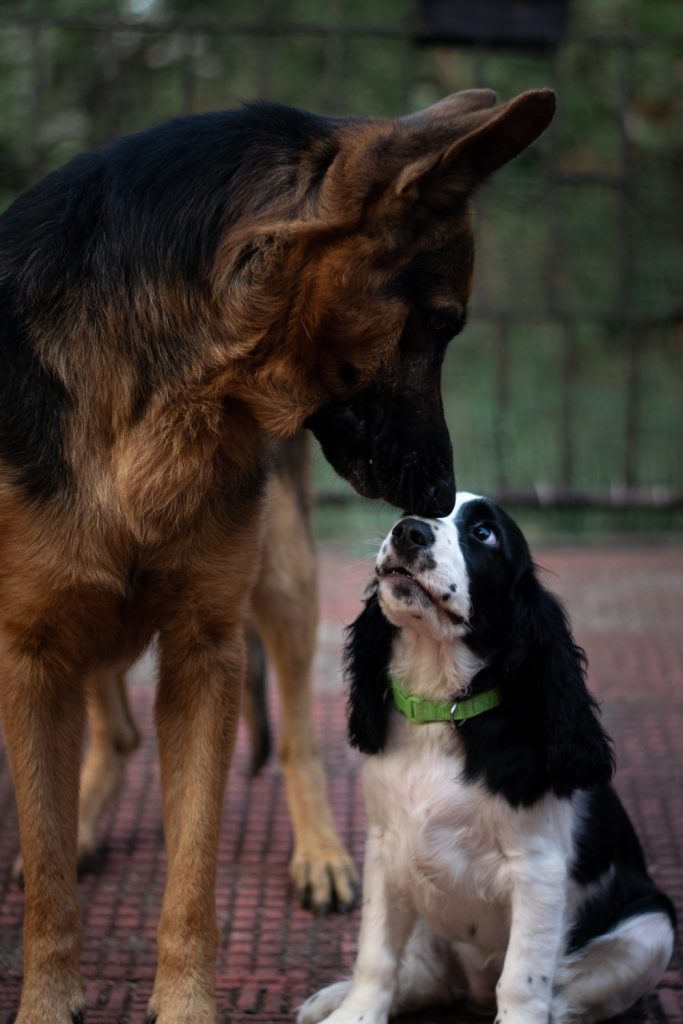Did you know you could be hurting your dog’s feelings without even realizing it?
Dogs are incredibly sensitive creatures. They can feel joy, sadness, and even rejection. And sometimes, without meaning to, we do things that break their trust or dampen their happiness.
But don’t worry—there are ways to fix that! Understanding how our actions impact our furry companions is the first step toward strengthening our bond with them.
Let’s take a look at 15 common mistakes that can emotionally hurt your dog and how to avoid them.
1. Calling Your Dog Over for Something They Don’t Like
When you call your dog, what happens next is crucial.
If you use “come” to summon them for things they hate—like bath time or scolding—they’ll start associating that word with negativity. Over time, they may stop responding altogether.
To avoid this, focus on creating positive associations. Anytime your dog responds to “come,” reward them! It doesn’t always have to be a treat. A warm “good boy” or some loving pets can work just as well.
And here’s the golden rule: never scold them if they’re slow to obey. The goal is to make them want to come to you—not approach you out of fear.
2. Not Providing a Clear Routine
Dogs thrive on structure and consistency. They’re creatures of habit, and a predictable routine helps them feel safe and secure.
Without one, their world can feel chaotic and stressful.
Simple things like regular mealtimes, walks, and play sessions create stability. When they know what to expect, they’re more relaxed and confident.
Now, this doesn’t mean you need to follow a strict schedule. But keeping things consistent, even on your busiest days, is key.
Providing this kind of stability won’t just make your dog happier—it’ll help them lead a more balanced and stress-free life.
3. Making Fun of Them
Your dog deserves respect, not ridicule.
Teasing them—like blowing in their face, tugging on their tail, or pretending to give them a treat—might seem harmless to you, but to them, it’s confusing and frustrating.
And then there’s the whole dressing-them-up-for-a-laugh thing.
Sure, a cozy sweater to keep them warm is fine. Maybe even a simple costume for a quick photo—if it doesn’t bother them.
But over-the-top outfits—hats, shoes, sunglasses—can make them feel restricted and uncomfortable.
Remember, fun should go both ways. If it’s only amusing for you but makes your dog anxious, it’s time to rethink things.

4. Handling Your Dog Unexpectedly
This is something we often forget over time.
Grabbing or lifting your dog without warning can really shake their trust.
If you pick them up or handle them out of nowhere, it can cause stress or even fear.
Even a surprise hug while they’re napping might make them feel uncomfortable. Sudden movements can startle them and break their sense of security.
To avoid this, always get their attention first. Say their name softly and wait for a tail wag or a glance your way.
And when you do approach, keep your movements calm and steady. No sudden ninja moves!
5. Ignoring Them When a Baby Arrives
Bringing a baby home shouldn’t mean pushing your dog to the sidelines.
Yes, life gets hectic, but your furry friend still needs love, attention, and reassurance.
If you ignore them, they might feel left out or even develop unwanted behaviors.
Instead, try involving them in your new routine with the baby. Pet them while feeding the baby or talk to them when they’re nearby.
Simple gestures like this remind them they’re still an important part of your life.
And here’s a bonus: spending time with dogs actually boosts serotonin and dopamine levels—aka, the feel-good chemicals.
So, not only will your dog feel happier, but they can also help you raise a happier baby!
6. Cutting Walks Short and Not Letting Them Explore
Walks aren’t just about potty breaks or stretching their legs—they’re your dog’s chance to explore and connect with the world.
When you rush through walks or don’t let them stop and sniff, you’re robbing them of an essential experience.
For your dog, every smell tells a story—who’s been there, what’s happened, and what’s changed in their environment.
Think of their nose as their version of “reading the news”.
Short walks or rushing them along is like taking them to their favorite park but not letting them play.
You’re not just cutting down on their physical activity—you’re also limiting their mental stimulation.
So, try to make walks longer and more relaxed. Let them sniff to their heart’s content and explore the world around them.
It’ll make them happier, healthier, and more fulfilled.

7. Isolating Your Dog When Guests Are Over
Your dog is a social creature who loves being part of the family—even when you have visitors.
Locking them away in the backyard or another room when guests come over can make them feel left out and anxious, like they’re being punished for no reason.
Instead of isolating them, let them join in on the fun.
This gives them a chance to socialize and learn how to behave around new people.
If you need them to stay calm, offer a chew toy or a puzzle feeder to keep them entertained while they hang out nearby.
Including your dog in these moments not only makes them happier but also strengthens their confidence and bond with you.
8. Using the Crate as Punishment
Your dog’s crate should be their safe space, a cozy little retreat where they feel secure.
But if you use it as punishment, it’ll quickly turn into a place of fear and isolation. Instead of locking them in the crate when they’ve been naughty, make it a positive, comforting spot.
Add a soft blanket, their favorite toys, or give them treats when they willingly go inside. This way, they’ll associate the crate with rest and relaxation, not discipline.
It’s a win-win—you’ll have a safe, calming space for your dog during stressful times, like thunderstorms or trips, without any negative vibes.
9. Forcing Your Dog Into Scary or Stressful Situations
What scares your dog might seem silly to you—elevators, shiny floors, or even the vacuum cleaner—but to them, those fears are very real.
Forcing your dog to face their fears head-on won’t help; in fact, it can make things worse, increasing their anxiety and damaging the trust they have in you.
The best thing you can do? Stay calm and patient by their side. If the situation is unavoidable—like a thunderstorm—create a safe, cozy space for them to retreat to.
Never mock their fears or push them to interact with what scares them. Your job is to help them feel protected, not pressured.
10. Forcing Your Dog to Greet Other Dogs
Not every dog is a social butterfly, and that’s totally okay.
Pushing your dog to say hello when they’re not feeling it can cause anxiety, stress, or even spark a negative reaction. Every dog has their own personality—some are outgoing, while others prefer to keep their distance.
Pay attention to their body language: if their ears are back, tail is low, or they’re trying to back away, respect their boundaries.
Not every doggy meetup has to end in a sniff-fest. What matters most is that your dog feels safe and knows you respect their comfort zone.

11. Yelling at Your Dog or Using an Aggressive Tone
Shouting at your dog might feel like a quick fix, but it’s definitely not the way to teach them good behavior.
Dogs are super sensitive to loud noises, and yelling only makes them scared and anxious. Plus, chances are they won’t even understand why you’re upset, which just makes things worse.
Research from the University of Porto in Portugal found that yelling has long-term negative effects on a dog’s mental health.
Instead of raising your voice, stick to a calm but firm tone. Use patience to correct unwanted behaviors and reward the good ones with treats or praise.
12. Not Providing Enough Mental Stimulation
A bored dog is an unhappy dog.
Your pup doesn’t have access to Netflix or TikTok, so it’s up to you to keep their brain engaged. If you don’t, they can easily develop stress or start acting out in ways you won’t love—like chewing up your favorite shoes.
Interactive toys, puzzle games, and outdoor sniffing adventures are all great ways to keep your dog’s mind active.
Even simple things, like letting them watch the world through a window, can add excitement to their day.
If you have the time, take them on walks or consider a doggy daycare for extra playtime and socialization.
Keeping their mind busy will make them a happier, more balanced pup.
13. Being Overly Corrective
Being too harsh with your dog can backfire big time.
Dogs don’t think or act like humans—they follow instincts and interpret the world in their own way.
If your pup digs in the yard or does something “naughty,” it’s not to annoy you; they’re just doing what comes naturally. Instead of scolding them, try to figure out the reason behind their behavior.
For example, if they’re digging, they might be looking for a way to entertain themselves or trying to cool off. Redirect that energy with proper alternatives!
14. Ignoring Your Dog’s Stress Signals
One surefire way to upset your dog emotionally is by ignoring their stress signals and pretending everything’s fine.
Dogs may not use words, but they have clear body language that tells you how they feel.
Yawning, licking their lips, avoiding eye contact, or showing the whites of their eyes are all ways your dog is saying, “I’m not okay right now.”
If you ignore these signs and keep them in overwhelming situations, their stress can build up, leading to behavioral issues down the line.
15. Making Them “Apologize”
Your dog doesn’t understand what it means to apologize, so forcing them to “say sorry” is pointless.
When your dog looks guilty after doing something, like chewing on your shoes or having an accident, they’re not feeling regret—they’re reacting to your emotions.
They sense you’re upset, and that’s what’s making them act “sorry.” Instead of expecting remorse, focus on guiding their behavior.
Positive reinforcement works wonders! Reward good behavior with treats, praise, or belly rubs. And whatever you do, don’t punish them with outdated methods like rubbing their nose in a mess—that just creates fear and confusion.

Dogs rely on us for emotional support, security, and love. Without realizing it, some of our everyday actions may be causing them stress, fear, or confusion.
By being mindful of their feelings, respecting their boundaries, and using positive reinforcement, you can build a stronger bond with your furry friend.
Small changes in the way we interact with them can significantly improve their emotional well-being.
Remember, a happy and emotionally secure dog is a healthier and more loving companion for years to come.
